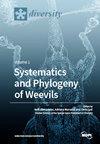Diversity of Cyanobacteria and Algae in Biological Soil Crusts of the Northern Ural Mountain Region Assessed through Morphological and Metabarcoding Approaches
IF 2.1
3区 生物学
Q2 BIODIVERSITY CONSERVATION
引用次数: 0
Abstract
In mountain regions, biological soil crusts (BSCs) provide essential ecological services by being involved in primary production and nitrogen fixation. Eukaryotic algae and cyanobacteria are important photosynthetic components of these unique cryptogamic communities. Here, we present an overview of the eukaryotic and prokaryotic diversity of such phototrophs in BSCs in the mountain tundra of the northern Ural Mountains. Such assessment is based on morphological surveys and the first metabarcoding analysis in the region. In total, 166 taxa of Cyanobacteria and 256 eukaryotic algae (including Euglenophyta, Ochrophyta, Dinophyta, Bacillariophyta, Chlorophyta, and Charophyta) were identified. For the first time, 86 taxa new to the BSCs of the high-mountain belt of the region were discovered. Considering species composition, Cyanobacteria and Chlorophyta are the most abundant taxa in all the analyzed BSCs. The genera Nostoc, Coccomyxa, Chlamydomonas, Leptolyngbya, Stenomitos, Pycnacronema, Stigonema, and Eunotia had the highest number of taxonomic units. These groups shape the structure, function, and ecology of the BSC communities in the studied region. Our results show that BSCs in the tundras of the Ural Mountains have a high active and passive biodiversity of terrestrial cyanobacteria and algae. Both implemented methods resulted in similar results with a comparable number of algae and cyanobacteria species per sample. Metabarcoding could be implemented in future in the region to accurately screen photosynthetic organisms in BSCs.基于形态学和元条形码的北乌拉尔山区生物土壤结皮蓝藻多样性评价
在山区,生物土壤结皮通过参与初级生产和固氮提供了重要的生态服务。真核藻类和蓝藻是这些独特的隐生群落的重要光合成分。本文对北乌拉尔山脉山地苔原BSCs中光养生物的真核和原核多样性进行了综述。这种评估是基于形态学调查和该地区的首次元条形码分析。共鉴定出蓝藻166个分类群和真核藻类256个分类群(包括裸藻、绿藻、藻、硅藻、绿藻和绿藻)。首次发现了86个高山带BSCs的新类群。从物种组成来看,蓝藻和绿藻是所有BSCs中最丰富的分类群。Nostoc属、Coccomyxa属、Chlamydomonas属、leptoolybya属、Stenomitos属、Pycnacronema属、Stigonema属和Eunotia属的分类单位数量最多。这些群体塑造了研究区域内平衡计分卡群落的结构、功能和生态。结果表明,乌拉尔山脉冻土带生物干细胞具有较高的陆生蓝藻和藻类的主动和被动生物多样性。两种实施的方法都产生了相似的结果,每个样本的藻类和蓝藻物种数量相当。未来可在该地区实施元条形码技术,以准确筛选BSCs中的光合生物。
本文章由计算机程序翻译,如有差异,请以英文原文为准。
求助全文
约1分钟内获得全文
求助全文
来源期刊

Diversity-Basel
Environmental Science-Ecological Modeling
CiteScore
3.40
自引率
12.50%
发文量
925
审稿时长
11 weeks
期刊介绍:
Diversity (ISSN 1424-2818) is an international and interdisciplinary journal of science concerning diversity concept and application, diversity assessment and diversity preservation. It is focused on organismic and molecular diversity. It publishes reviews, regular research papers and short notes in the regular issues. Related news and announcements are also published. Our aim is to encourage scientists to publish their experimental and theoretical results in as much detail as possible. Therefore, there is no restriction on the length of the papers. Full experimental details must be provided so that the results can be reproduced.
 求助内容:
求助内容: 应助结果提醒方式:
应助结果提醒方式:


